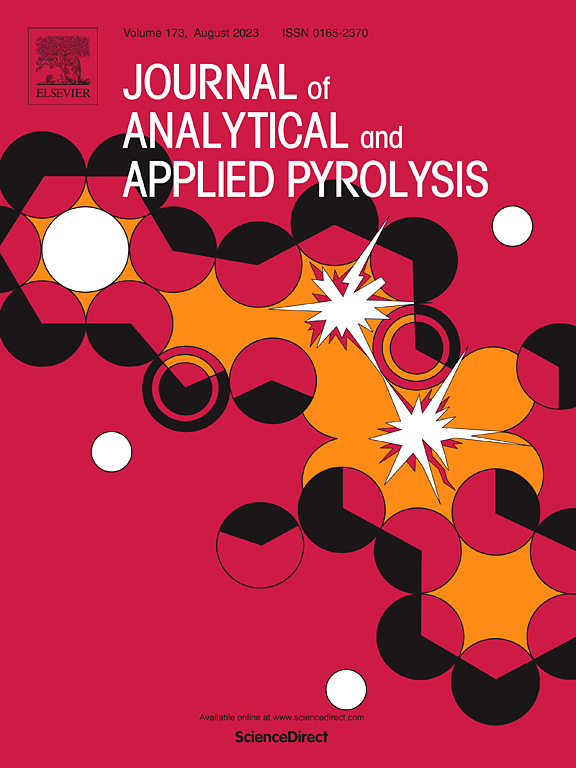一次性湿巾作为潜在污染源:纤维和添加剂组成的多重分析调查
IF 6.2
2区 化学
Q1 CHEMISTRY, ANALYTICAL
引用次数: 0
摘要
湿巾作为一次性产品用于个人卫生护理,家庭清洁和卫生使用。由于全球2019冠状病毒病大流行,湿巾的使用量增加,同时引入了标签,表明一些湿巾可以通过冲洗处理或可生物降解,这引发了人们对湿巾进入污水系统和环境时释放微纤维和化学物质相关风险的担忧。研究一次性湿巾处理的行为和影响的一个关键步骤是它们的纤维和添加剂的物理化学特征。我们设计并应用了一种基于演化气相分析-质谱法(EGA-MS)和多次热解-气相色谱-质谱法(pygc - ms)的多分析方案,以及扫描电镜(SEM)和红外光谱(ATR-FTIR)来鉴定商业湿纸巾的组成材料的化学成分。从纤维成分和有机添加剂的角度分析了四种不同类别的湿巾——认证和非认证可冲洗、可生物降解和常规——包括总共12种样品。EGA-MS和pyy - gc - ms分析证实,所有可冲洗和可生物降解的湿巾样品仅由纤维素纤维组成,而在传统的湿巾中,除了纤维素外,还检测到聚丙烯和聚对苯二甲酸乙酯。这两种技术对苯甲酸/苯甲酸钠、2-苯氧乙醇、甘油等添加剂的检测也很有效。扫描电镜分析可以区分天然和再生纤维素纤维。分析方案可以进一步发展,以检查湿擦降解,添加剂的潜在环境影响,并评估其对环境样品的影响。本文章由计算机程序翻译,如有差异,请以英文原文为准。
Disposable wet-wipes as potential source of pollution: Multi-analytical investigation of the composition of fibres and additives
Wet wipes are used as disposable products for personal hygiene care, domestic cleaning, and sanitary use. Increased use of wet wipes as a consequence of the global COVID-19 pandemic, along with the introduction of labelling to indicate that some wipes can be disposed of by flushing or are biodegradable, raise concerns about the risks associated to the release of microfibres and chemicals when wet wipes enter the sewage system and the environment. A key step in the study of the behaviour and fate of the impact of the disposal of single use wet wipes is their physical-chemical characterisation in terms of fibres and additives. We designed and applied a multi-analytical protocol based on evolved gas analysis-mass spectrometry (EGA-MS) and multi-shot pyrolysis-gas chromatography-mass spectrometry (Py-GC-MS), along with scanning electron microscopy (SEM) and infrared spectroscopy (ATR-FTIR), to identify the chemical composition of the constituent materials of commercial wet wipes. Four different classes of wet wipes - certified and non-certified flushable, biodegradable, conventional - comprising a total of 12 types of samples were analysed in terms of fibre composition and organic additives. EGA-MS and Py-GC-MS analysis confirmed that all flushable and biodegradable wipe samples were only composed of cellulose-based fibres, whereas poly(propylene) and poly(ethylene terephthalate) were detected, along with cellulose, in the conventional wipes. The two techniques proved also effective in the detection of additives like benzoic acid/sodium benzoate, 2-phenoxyethanol, glycerine etc. SEM analysis allowed the discrimination between natural and regenerated cellulose fibres. The analytical protocol could be further developed to examine wet wipe degradation, the potential environmental effects of additives, and assess their impact in environmental samples.
求助全文
通过发布文献求助,成功后即可免费获取论文全文。
去求助
来源期刊
CiteScore
9.10
自引率
11.70%
发文量
340
审稿时长
44 days
期刊介绍:
The Journal of Analytical and Applied Pyrolysis (JAAP) is devoted to the publication of papers dealing with innovative applications of pyrolysis processes, the characterization of products related to pyrolysis reactions, and investigations of reaction mechanism. To be considered by JAAP, a manuscript should present significant progress in these topics. The novelty must be satisfactorily argued in the cover letter. A manuscript with a cover letter to the editor not addressing the novelty is likely to be rejected without review.

 求助内容:
求助内容: 应助结果提醒方式:
应助结果提醒方式:


